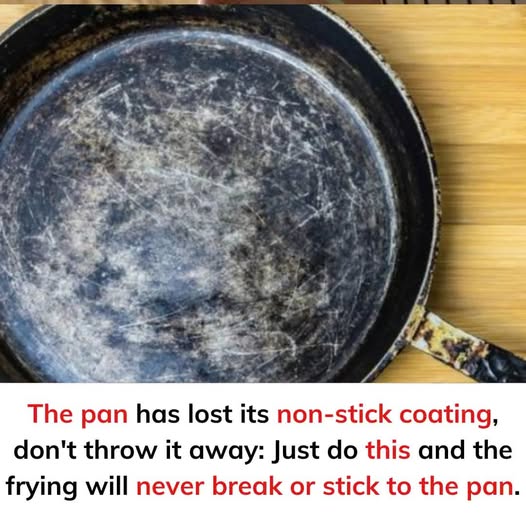ADVERTISEMENT
- Avoid High Heat: As mentioned earlier, non-stick cookware is designed for lower to medium heat. Avoid cooking on high heat, as this can cause the coating to break down faster. If you need to sear something, consider using a different type of cookware, like stainless steel or cast iron.
- Use Non-Metal Utensils: Always use wooden, silicone, or plastic utensils to prevent scratching the non-stick surface. Metal utensils can damage the coating, leading to peeling and reduced performance.
- Gentle Cleaning: After cooking, allow the pan to cool down before washing it. Use a soft sponge or cloth to clean the surface, and avoid abrasive pads or harsh chemical cleaners. You can use a gentle dish soap and warm water to clean the pan, and always dry it thoroughly afterward to prevent any rust or water damage.
- Store Carefully: When storing your non-stick pans, avoid stacking them on top of each other unless you place a soft cloth or towel between them. This prevents the non-stick surface from being scratched by other pans or kitchen tools.
- Season Your Pan (Occasionally): Some non-stick pans benefit from occasional seasoning. This involves rubbing a thin layer of cooking oil (such as vegetable oil or canola oil) on the cooking surface and heating it gently for a few minutes. This can help create a protective layer and enhance the non-stick properties.
What to Do When the Non-Stick Coating Is Beyond Repair?
If your non-stick pan has lost its coating and is no longer performing effectively, it may be time to consider replacing it. However, there are some alternative options before you toss it out:
- Recoat the Pan: Some companies offer non-stick pan recoating services. This option can be cost-effective if the pan is still structurally sound, but it’s worth checking whether the cost of recoating is worth the value of the pan. Typically, this service is available for high-quality, expensive non-stick cookware.
- Use It for Other Purposes: Even if the non-stick coating is no longer effective for cooking, the pan might still be useful for other tasks. You could repurpose it for crafts or as a storage container for other kitchen tools. Just be sure to wash it thoroughly before doing so!
- Consider a Different Cooking Method: If your non-stick pan is still in usable condition but the coating is damaged, you can use it for low-heat cooking or sautéing. It may not have the same non-stick properties, but you can still use it for certain tasks, especially if you’re using butter or oil to prevent sticking.
When Is It Time to Replace the Pan?
If the non-stick coating is significantly chipped, flaking, or peeling off, it’s time to replace the pan. Ingesting particles of non-stick coating is not safe, so it’s best to retire the pan once it’s no longer effective. If the damage is extensive, or the pan shows signs of warping or rusting (if it’s not a completely non-stick material), it’s time to invest in a new one.
Alternatives to Non-Stick Pans
If you’re ready to replace your non-stick pan, consider these alternatives that offer similar ease of cooking but with more durability:
- Cast Iron: Cast iron pans, when properly seasoned, provide a naturally non-stick surface that improves over time. They’re excellent for high-heat cooking and can last a lifetime with proper care.
- Stainless Steel: Stainless steel pans are highly durable and resistant to scratching. While they aren’t non-stick by default, using oil or butter can help prevent sticking.
- Ceramic Coated Pans: Ceramic-coated pans are a newer, more eco-friendly alternative to traditional non-stick cookware. They offer a non-toxic non-stick surface and can be a good choice for those looking for a safer, long-lasting option.
- Carbon Steel: Similar to cast iron, carbon steel pans develop a natural non-stick coating over time and are perfect for high-heat cooking.
Final Thoughts: Giving Your Non-Stick Pan a Second Chance
While it’s disappointing when your favorite non-stick pan loses its coating, there’s no need to throw it away just yet. With proper care, you can prolong the life of your non-stick cookware. If the coating is beyond repair, there are alternative cooking methods and materials that can offer the same convenience. By switching to other non-stick options like cast iron, stainless steel, or ceramic-coated cookware, you’ll be equipped for cooking your favorite meals with ease and confidence.
ADVERTISEMENT
